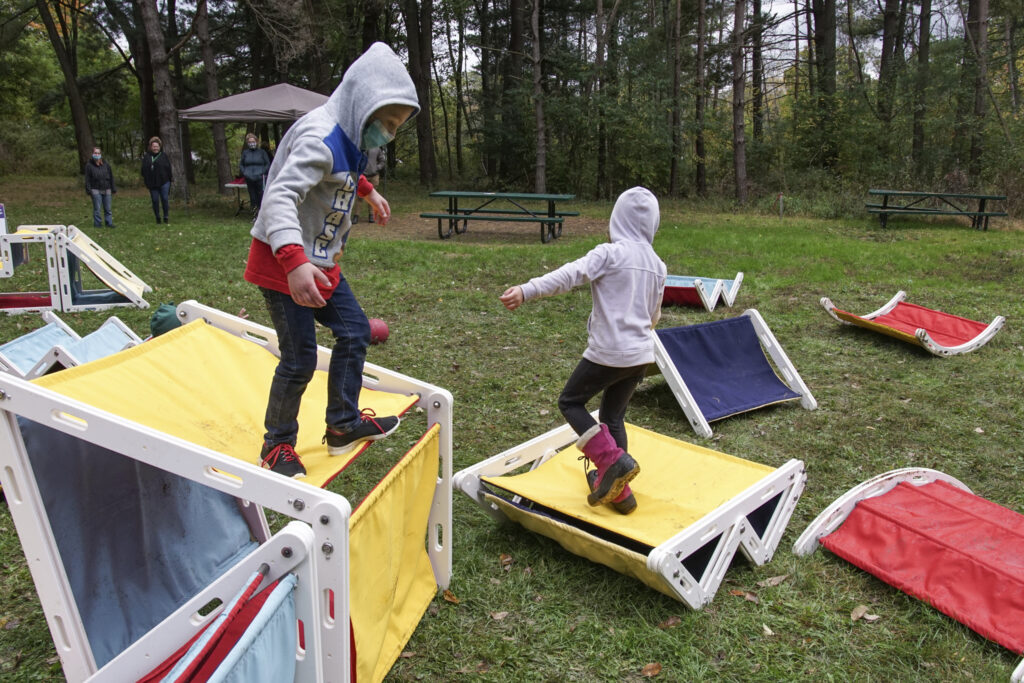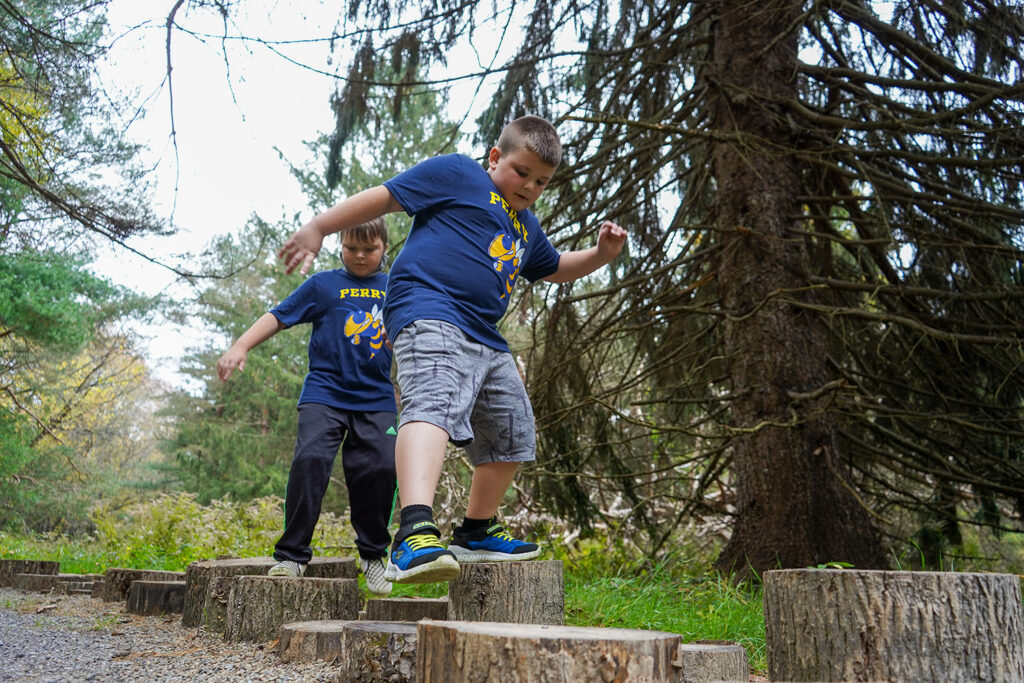Through the Play Everywhere Design Challenge, the Ralph C. Wilson, Jr. Foundation and KABOOM! offer a pathway for communities across Western New York and Southeast Michigan to create safe, exciting places for kids to do what they do best: play. Play Everywhere installations like The Play Path and the Autism Nature Trail provide places where kids with unique needs can engage in nature-based play – ensuring that they not only can access the proven benefits of play, but experience nature and its many benefits, from spurring creativity and imagination to reducing stress and fatigue.
A New Play Path for Rural Communities in Southwestern New York
The Rural Outreach Center (ROC) aims to break the cycle of poverty for rural communities in Western New York. Safe playspaces are crucial for all young bodies and minds – but they are particularly important for kids who experience adversity, including poverty. By creating the Play Path, ROC aims to offer children a place to work through stress and build up the skills to help them cope with and adapt to adversity in the future.
The Play Path is designed to be embedded outdoors in the environment. Co-designed with children from the local community via interactive workshops to empower their creativity, all of the ideas were then synthesized into the final concept shown here.

The Play Path, which opened in October 2021, features playful furniture-like shapes that combine to create reconfigurable and modular play areas designed to help develop teamwork as well as spatial, visual, and mathematical skills in a physical and tactile way. Situated throughout a wooded area, visitors are encouraged to explore the environment and engage with nature in a fun way.
According to industrial designer Kenny Arnold, The Play Path acts as a dynamic hybrid playscape where children can play on colorful, durable equipment as well as experience the region’s flora and fauna. Beyond connecting with each other, Play Path pieces can also be attached to trees found along the path.
“The Play Path is a great way to give the kids here access to activities that they typically would not have,” said Amanda Leggert, Program Director for the Rural Outreach Center. “Giving the kids the ability to be involved in the creation means they will hold a sense of ownership over it.”
Promoting Inclusive Nature Play at the Autism Nature Trail
The Autism Nature Trail (The ANT) at Letchworth State Park is designed to allow visitors with autism and related disorders to enjoy exploration and sensory integration in a natural setting. The Playful Path is rapidly becoming the most popular component at The ANT. With twisting pathways, a diverse array of surface materials, it offers a safe, inclusive space for kids with autism to experience nature and adventure. The combination of nature and play can help all young visitors develop cognitive, language, physical, social, and emotional skills.

“We see children on the spectrum take risks and interact with others in surprising ways on the Playful Path,” says Co-Chair for The ANT Loren Penman. “When challenge is presented as choiceful play (and not competition) in a serene, natural environment, kids’ engagement has amazed parents, teachers and caregivers, allowing all to feel more comfortable accessing outdoor recreation opportunities.”
“As the Sensory Destination Coordinator for the ANT and a special education teacher in the Perry Central School District, I am thrilled to have such a meaningful outdoor learning environment for my children to enjoy,” said Brittany Johnson. “I have been lucky enough to bring my students to the ANT and explore the Playful Path. The best part about this experience was watching my students use their imagination and enjoy the Playful Path in their own unique way.”
